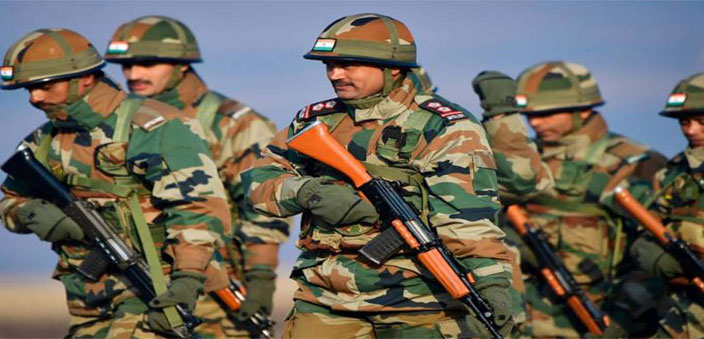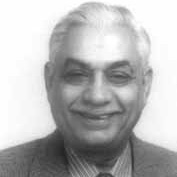The year 2017 started on a somewhat controversial note when General Bipin Rawat assumed command of the Indian Army, superseding two army commanders senior to him. Considerable discussion followed, as barring exceptions, the government usually stays on the straight and narrow path of seniority. There was considerable scepticism in the media, including the social media.
Army Day rolled by on 15 January, and the Prime Minister (PM) graciously tweeted: “We remember with great pride all the sacrifices made by our Army. They put their lives at risk so that 125 crore Indians live peacefully.” However, a couple of months later his government swooped down on a peaceful gathering of protesting veterans demanding removal of anomalies of OROP (One Rank One Pension)!
Defence ministers aplenty!
The present government seems to like juggling Defence Ministers! In three years we have had four, including one incumbent twice, but in name only, as his first charge was the Ministry of Finance. Manohar Parrikar, after taking over on 9 November 2014, remained in office for just about two years and returned to Goa – his state. Arun Jaitley became a caretaker defence minister again for about six months, thus completing nearly one wasted year for an important ministry!
Parrikar, despite being a lightweight in his party, tried to learn the ropes of the Ministry and bring badly needed changes, but could not get the better of the entrenched MoD (Ministry of Defence) bureaucrats. He could neither satisfy the veterans fully in their long-standing demand of OROP, nor the serving personnel, as there was no progress in the much-needed modernisation of the armed forces. He could not resolve anomalies in pay and allowances either. He fell into the bureaucrat trap of setting a host of committees, whose recommendations are mostly languishing in the MoD cupboards. These include the Reddy Committee for OROP anomalies, Promotion Policy Committee, and many others. Even the high-powered Shekatkar Committee’s recommendations have been only partially accepted, while the real hard-nosed ones have been quietly buried.
The Kashmir conundrum
The end of severe winter coincided with an upsurge in violence in the Valley. The state government was visibly helpless and was more concerned with the upcoming elections in Srinagar and Anantnag. The police and CAPF also had their constraints and failed to take strong action. It was left to the army to contain the local violence, as well as neutralise the insurgents.
In mid April, the so-called ‘human shield’ episode occupied the media for weeks, if not months. It was actually an innovative and a spur of the moment action by a junior army officer for saving personnel on election duty from a mob bent on assaulting, if not killing them. It did not deserve the kind of publicity it received! Around the same time, a young Kashmiri officer of the army, Lt. Ummer Fayaz Parry, was abducted and brutally killed by militants in Shopian district, while he was visiting his village, on leave, to attend a wedding. The media, the state government, and the human rights groups hardly took cognisance of this brutal act; proving the one-sided reality of violence in Kashmir!
In J&K, Operation Sadhbhavna of the army continued to be a resounding success. In a situation where the state government does nothing to provide good governance, it is only Sadbhvana that brings hope and succour to the people. Its effect on the hearts and minds of the people is starkly visible when thousands of Kashmiri youth come for the army’s recruitment rallies.
A ‘hollow’ army?
India’s unresolved territorial disputes with both China and Pakistan continued unabated during 2017. Along the Line of Actual Control (LAC) with China, a major standoff that lasted over 72 days in the Doka La area, near the southern tip of the Chumbi Valley, was handled with aplomb by the Indian Army, especially as it had major politico-diplomatic-military facets, as a third country – Bhutan – was also involved.
In J&K, the Line of Control (LoC) ostensibly under a mutually agreed ceasefire for nearly two decades, remained active on account of Pakistan continuing to infiltrate Jihadi insurgents and terrorists across it. Deployment of army continues in the north-eastern states too.
Thus, instead of reduction of operational tasks, the army keeps getting deeper in both the morass of counter insurgency operations, and border defence at the same time. Although Indian Army soldiers are well trained, well led, and are physically and mentally tough, these repetitive tasks are taking their toll, and do affect morale adversely. The political leadership seems to have no plans to change this situation by other means, although the strength of all types of police forces, administrators, and subordinate staff keep increasing, as do their pay and allowances, while the army plods on with antiquated equipment, reduced emoluments, and ever-increasing tasks.
Despite its high numerical strength, the Indian Army continues to be a hollow army. Consequently, its’ ability to undertake various types of military operations on the modern battlefield stands greatly reduced. There are three major reasons for this state of affairs. The first is the abysmally low defence budget that has been dwindling every year and now stands reduced to just 1.5 percent of the GDP. The second is our complicated procurement procedures. Despite eight Defence Procurement Plans (DPPs) having been issued in nine years, there is no change in the situation.
The third reason is that while ‘Make in India’ policy of the PM resonates in discussions, media reports, committees, election bhashans (speeches), and the like, precious little action is visible on the ground. The PSUs (Public Sector Undertakings) carry on in their lethargic ways as in the past; the DRDO (Defence Research and Development Organisation) has produced little that could be called satisfactory by the users, despite huge time delays and cost over-runs.
The army’s shortage of weapons and equipments keep mounting. In broad terms, bulk of its weapons and equipment are either in an obsolescence or obsolete state. As an example, the largest arm, the infantry that is the backbone of counter insurgency operations as well as for fighting battles and wars, has no modern weapons and equipment. All Arms and Corps are in a similar state. Reserves of ammunition of all types are also at a record low.
Despite the above, talk of wars on two fronts and even two and a half fronts have been articulated by highly senior persons, who should know better!
Do we value our army?
A most peculiar order was passed within a few days of the new Defence Minister Nirmala Sitharaman taking over (the fourth change in three years of the present government!). The army was ordered to clear garbage left by tourists. While the army hierarchy, acting as the proverbial sacrificial lambs, meekly accepted it, there was furore among the veterans, and in the social media. They rightly stated that at no given moment should the country’s military be deployed to tackle something as opposite to their line of duties as garbage collection. Why are local civil government institutions/officials shirking their responsibility?
A month or so later, the Defence Minister again tasked the army on a non-military task, to construct four foot bridges across local train lines in Mumbai, when elaborate and better expertise is available with the Railways, and it is their job. It was a political move to bail out both the Railways and the BJP-led government in Maharashtra, who were twiddling their thumbs after an accident on a pedestrian bridge. It is a mystery why the army accepted it!
There has been an inconclusive debate on the selection system currently prevailing for officers of flag ranks. Although the selection system for promotions in the army is as fair and comprehensive as is possible, yet aberrations came in when promotions based strictly on command vacancies falling vacant for a particular batch were changed/tweaked for extraneous reasons. There is a move now to cut out the anomalies, but a formal decision is yet to be taken.
As the year was approaching its end, two important announcements were made, but the media reported only one. The planned upgradation of rank structures of nearly 1.5 lakh JCOs and Jawans over the next five years was well received. Essentially, it is a cadre review, which was last carried out in 1984. While benefitting individuals, it has some negative connotations too. Cadre reviews only succeed when additional slots are created within and outside the army, otherwise there will be severe command and control problems on the one hand, and stagnation in different ranks at different times.
The second decision was the declaration of 2018 as the ‘Year of the War Disabled’ by the Army Chief. The proposal for this was mooted by this writer at a War Disabled Personnel Rally at Pune in May this year, in his capacity as the President of the War Wounded Foundation, an NGO functioning for all war disabled personnel of the army, navy and air force. May be the media is waiting for a formal announcement!
The induction of women in the ranks, initially in the Corps of Military Police (CMP), came in for a lot of criticism, as it was rightly read as a political sop and not needed for a country that has hordes of male volunteers waiting to be recruited. This move is also likely to create adverse management problems, without any tangible gains.
A military litfest
An event widely reported in some sections of the media was the first Military Literature Festival (MILFEST) of the nation held at Chandigarh. It was a joint venture between the State of Punjab and Headquarters Western Command. Both the Governor and Chief Minister of Punjab were fully involved in its planning and execution. The MILFEST was preceded by many army teams performing and showing their skills, much to the delight of the people of Chandigarh and nearby cities. Besides highlighting wars fought by the armed forces, lessons learnt, military history of the Punjab and so on, the MILFEST proved that ‘military literature’ is not an oxymoron!
The bottom line is that no real change has taken place in the army in 2017. However, because of efforts of the army and not the government, there is better appreciation of the army and the tasks it performs for the nation. There is a definite need to reduce deploying the army on internal tasks, so that they get adequate time to train for their primary task, and also have a better quality of life.
As India rises in stature economically and technologically towards a more eminent position in the region and the world, it has to concurrently build on its military power. The political leadership must take this issue seriously, lest the country is found napping when ‘push comes to shove’!


 [/column]
[/column]